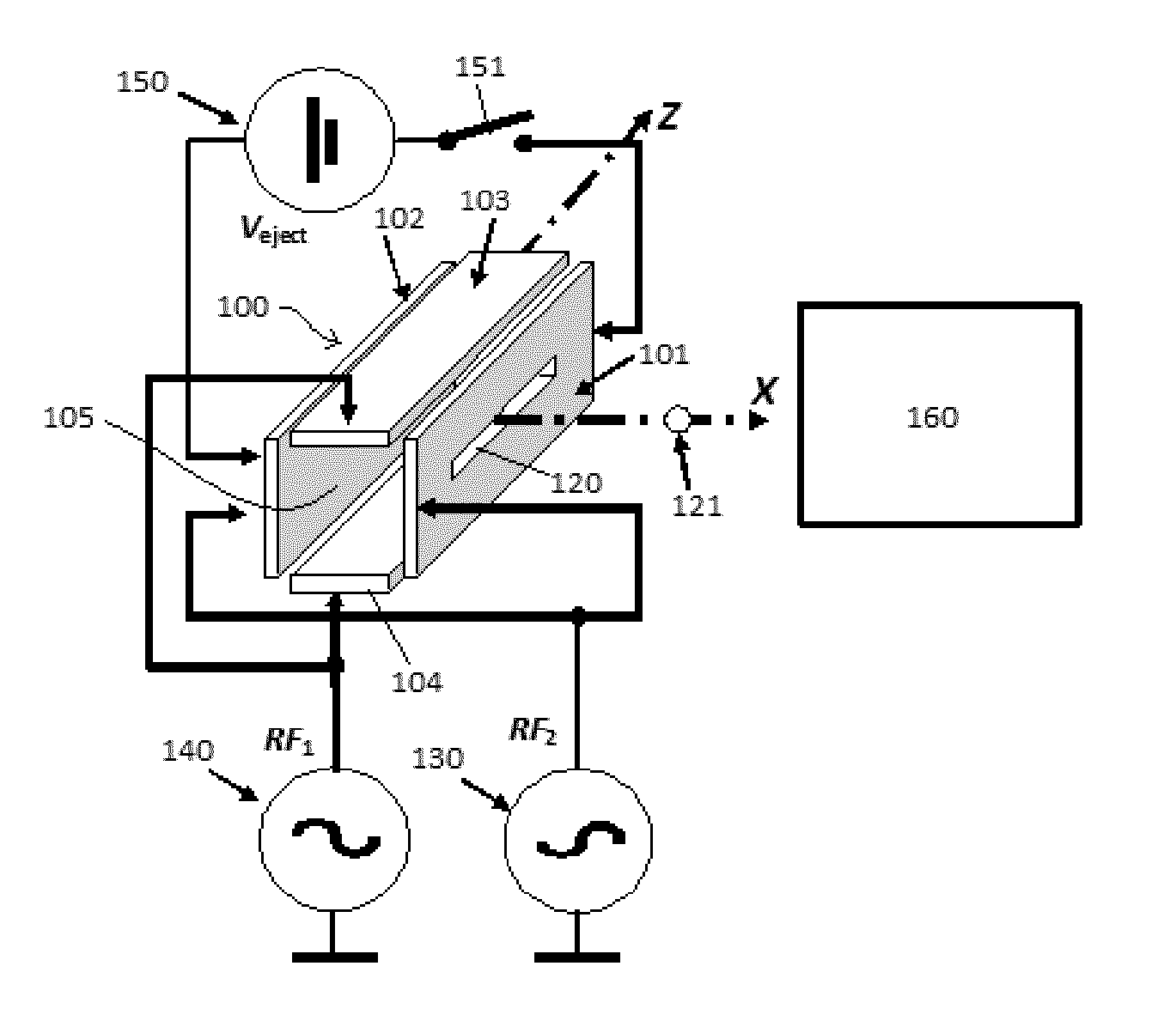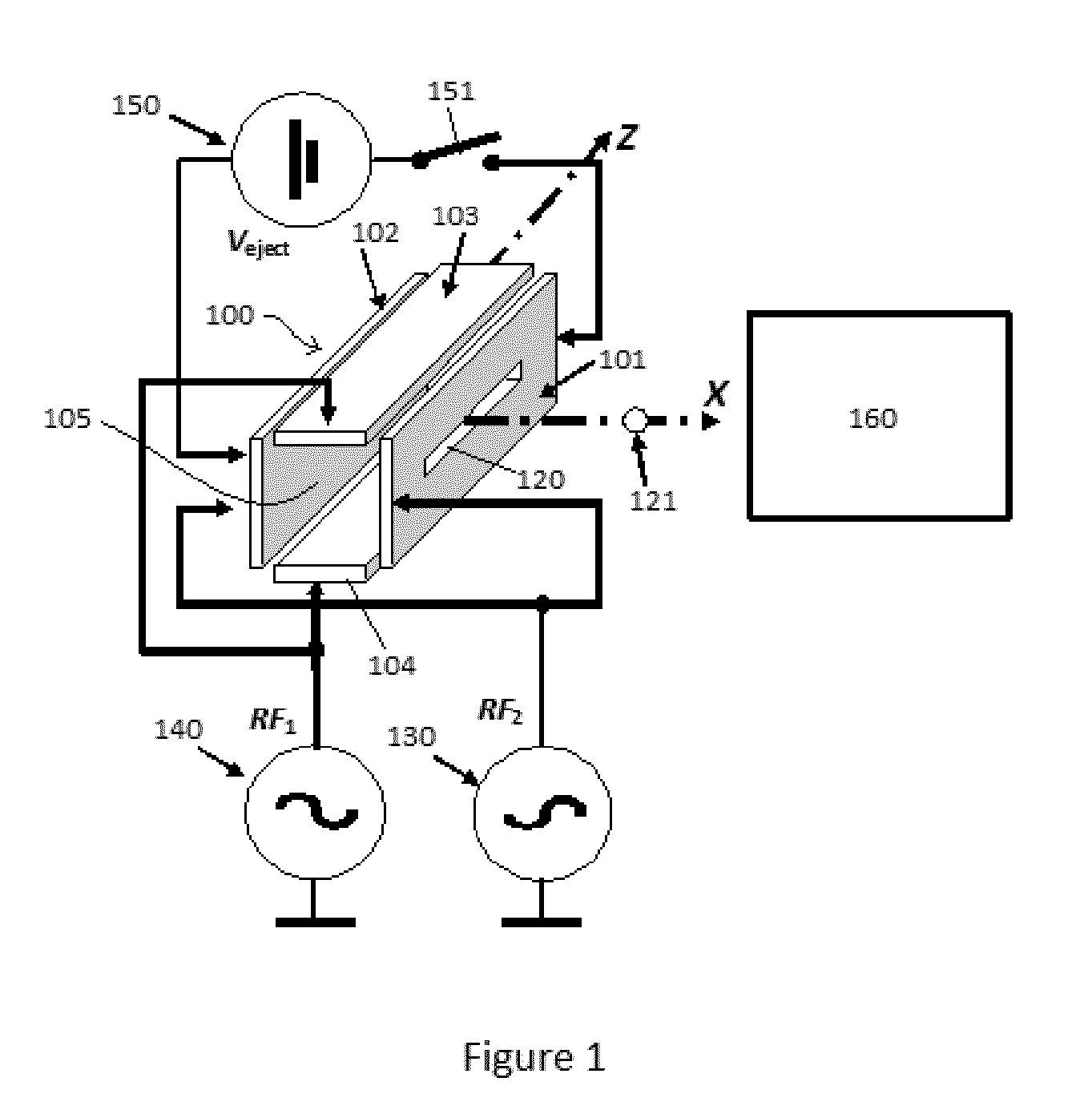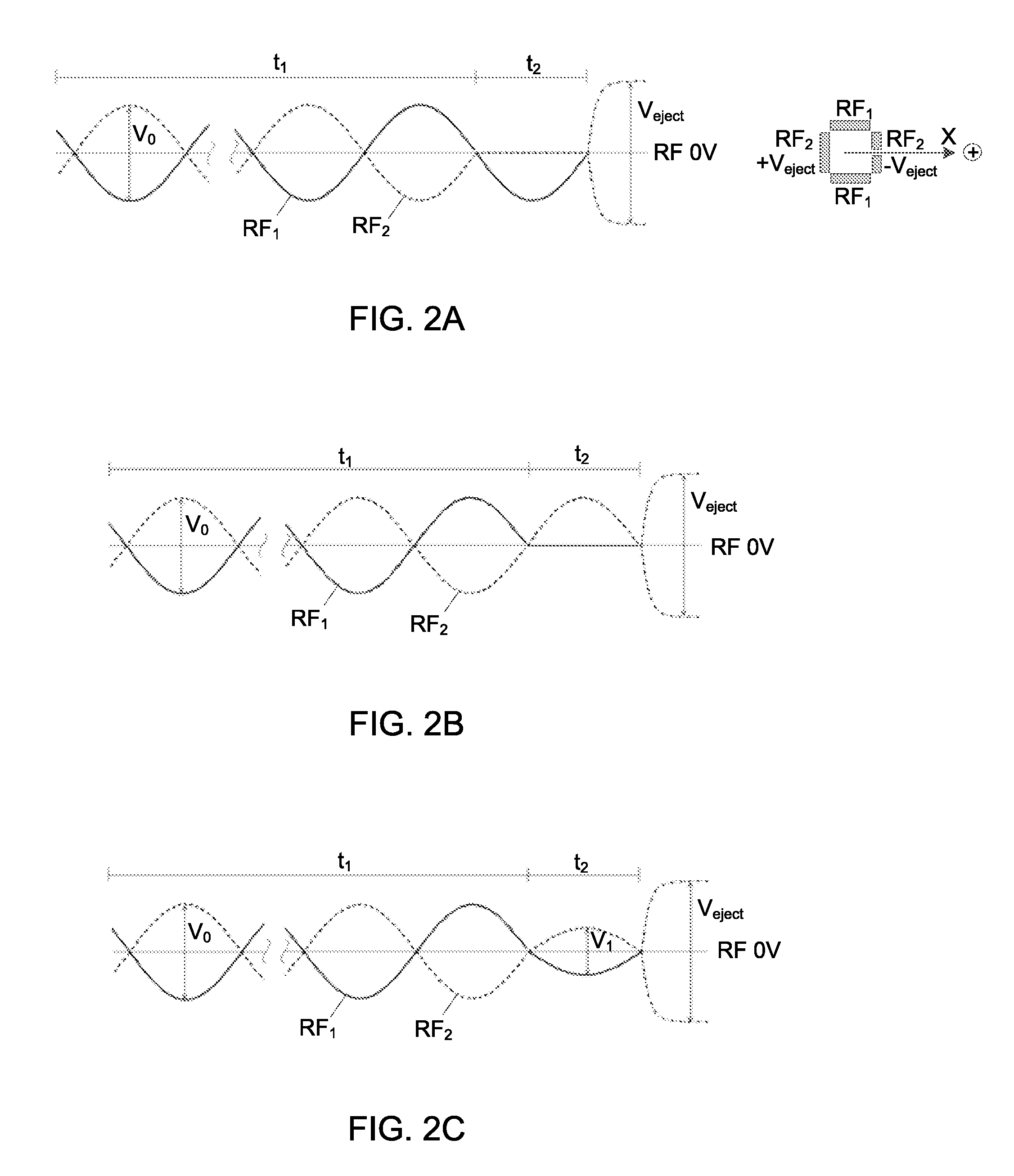Ion ejection from a quadrupole ion trap
a quadrupole ion trap and ejection technology, applied in the field of ion ejectors, can solve the problem of inability to reduce these potentials to near zero, and achieve the effect of reducing the initial velocity spread and high mass resolving power
- Summary
- Abstract
- Description
- Claims
- Application Information
AI Technical Summary
Benefits of technology
Problems solved by technology
Method used
Image
Examples
Embodiment Construction
[0053]Various embodiments of the present invention will now be described by way of the following examples and the accompanying figures.
[0054]FIG. 1 shows a schematic perspective view of a linear quadrupole ion trap for use with the present invention. The trap 100 comprises four electrodes, 101, 102, 103, 104. Electrodes 101 and 102 oppose one another in the X direction, and electrodes 103, 104 oppose one another in the Y direction. Electrodes 101 and 102 are oriented perpendicular to electrodes 103 and 104. Electrodes 101, 102, 103, 104 are shown as flat plates each having a length oriented parallel to axis Z, but may be round rods each with an axis parallel with axis Z. Alternatively the electrodes may comprise hyperbolic surfaces facing in towards axis Z. Other electrode shapes are contemplated. Electrode 101 has a slot 120 for ejection of ions 121 from the trap 100 in the X direction towards mass spectrometer 160, which may be a TOF mass spectrometer, or a FT mass spectrometer, o...
PUM
 Login to View More
Login to View More Abstract
Description
Claims
Application Information
 Login to View More
Login to View More - R&D
- Intellectual Property
- Life Sciences
- Materials
- Tech Scout
- Unparalleled Data Quality
- Higher Quality Content
- 60% Fewer Hallucinations
Browse by: Latest US Patents, China's latest patents, Technical Efficacy Thesaurus, Application Domain, Technology Topic, Popular Technical Reports.
© 2025 PatSnap. All rights reserved.Legal|Privacy policy|Modern Slavery Act Transparency Statement|Sitemap|About US| Contact US: help@patsnap.com



